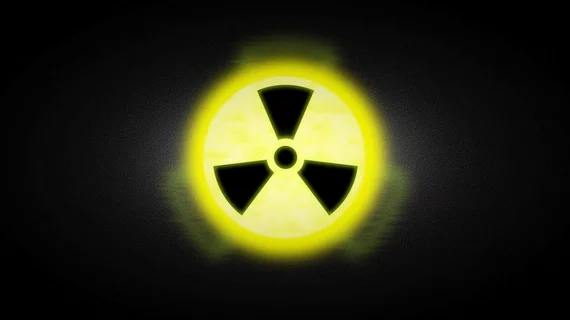Streamlined protection suit offers compact method to minimize radiation exposure
A more compact, complex alternative to the traditional two-piece apron suit protects interventional radiologists from radiation exposure better than its predecessor, researchers wrote in the European Journal of Radiology this month. But that streamlined technology comes with a high price tag.
As radiology technology and research continue to advance, corresponding author Robin Etzel, MSc, and colleagues wrote in the journal, the focus hasn’t been entirely on imaging patients.
“The increasing number of minimal invasive fluoroscopic-guided interventions may result in higher radiation exposure for interventional radiologists and the medical staff,” Etzel, who’s linked to both the Institute of Medical Physics and Radiation Protection and Philipps-University of Marburg in Germany, said. “Not only the number of procedures but also the complexity of these procedures is growing and, therefore, the fluoroscopy time as well.”
The increase in radiation exposure comes hand-in-hand with elevated risks for a host of cancers, the authors said, as well as adverse tissue and organ reactions. For years radiologists have employed lead aprons, collars and shields to protect their bodies, thyroid and eyes from those possibilities, but those suits are far from convenient.
Etzel et al. tested the efficacy of a more modern, “weightless-like” radiation protection suit against conventional protection. The weightless-like system, which has a two-times thicker lead equivalency than a traditional system and an additional acrylic face shield, is mounted on a swing arm to support its size and weight.
“An advantage of the weightless-like radiation protection garment is the fact that it is ‘weightless-like,’” the authors wrote. “Due to the freely suspended mounting on a swing arm, almost all the mass of the system is held by the swing arm. Therefore, the shoulders of an interventional radiologist are not loaded by the full weight of the radiation protection equipment.”
That’s great in a field where more and more physicians are reporting orthopedic issues on the job, they said, but higher complexity of the new system also means higher costs and more extensive installations.
The researchers set up an interventional radiology simulation for the study—using a fluoroscopy protocol with an increased frame rate of 15 frames per second and a full field of view to increase dose levels for accurate measurements—to copy the procedure “as realistically as possible” and determine which suit better protected an attending radiologist against exposure.
Etzel and co-authors said they found a similar radiation protection efficacy between both systems when the conventional suit was supplemented by an overhead ceiling mounted acrylic shield and table-mounted lead curtain and the modern suit was used on its own. When combining the weightless-like system with the ceiling-mounted shield and lead curtain as ancillary shields, the modern suit was able to significantly reduce radiation exposure compared to its older standard.
“Combined with ancillary shields as an overall protection system, the recently introduced weightless-like radiation protection garment showed a significant better radiation protection efficacy when compared to conventional radiation protection measures,” the authors wrote. “Consequently, for an optimal radiation protection, a combination of different protection devices is important.”

